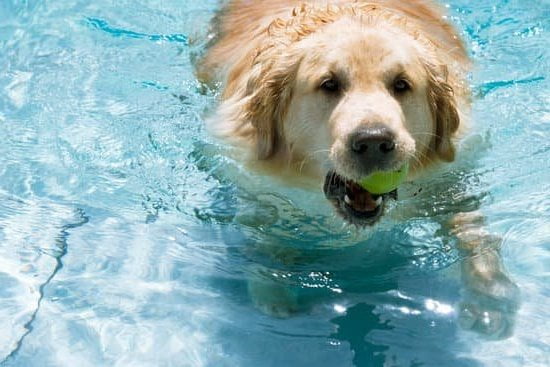Many dog owners may find themselves struggling with the behavior of a lightly aggressive dog. Understanding how to train a lightly aggressive dog is crucial in providing them with the guidance they need. Light aggression in dogs can manifest in various ways, from growling and snapping to resource guarding or fear-based behaviors.
It is important to recognize the common reasons for aggression in dogs, which can range from genetics and breed tendencies to lack of socialization or past traumatic experiences. Early socialization plays a significant role in preventing aggressive behavior, as it helps dogs feel more comfortable and confident in different situations. By understanding the triggers and signs of aggression in dogs, pet parents can proactively address these behaviors.
Positive reinforcement training techniques are essential when working with lightly aggressive dogs. Offering rewards for desired behaviors encourages good conduct while building trust between the dog and owner. Implementing structure and consistency in training routines also helps establish boundaries and expectations for the dog. For more severe cases of aggression, seeking professional help from a certified trainer or behaviorist is recommended to ensure proper handling and guidance.
Common Reasons for Aggression in Dogs
When it comes to understanding and addressing aggression in dogs, it is crucial to recognize the common reasons that may trigger such behavior. One of the primary factors that can lead to aggression in dogs is fear. Dogs may become aggressive when they feel threatened or scared, leading them to display defensive behaviors. This fear-induced aggression can manifest in various situations, such as encountering unfamiliar people or animals, loud noises, or being put in stressful environments.
Another significant reason for aggression in dogs is inadequate socialization during their developmental stages. Puppies that do not have positive interactions with other dogs, animals, and people may struggle to understand social cues and appropriate behavior as they grow older. This lack of socialization can contribute to fear and anxiety, which are often underlying causes of aggression in dogs.
Additionally, medical issues can also play a role in triggering aggression in dogs. Pain, discomfort, or underlying health conditions can cause a dog to act out aggressively as a way to communicate their distress. It is essential for pet owners to be vigilant about their dog’s health and well-being and address any potential medical issues promptly to prevent aggressive behaviors from escalating.
| Factors Leading to Aggression | Examples |
|---|---|
| Fear | Feeling threatened by unfamiliar people or animals |
| Inadequate Socialization | Lack of positive interactions during developmental stages |
| Medical Issues | Pain, discomfort, or underlying health conditions |
By understanding these common reasons for aggression in dogs, pet owners can take proactive steps towards addressing and managing their dog’s behavior effectively. Knowing the root cause of the aggression enables individuals to tailor training techniques and strategies specifically designed to help their furry companion overcome these challenges. Remember that each dog is unique, so it is essential to approach training with patience, consistency, and a deep understanding of your dog’s individual needs.
Importance of Early Socialization in Preventing Aggression
The Role of Socialization in Behavior Development
Early socialization plays a crucial role in shaping a dog’s behavior and temperament. It involves exposing puppies to various people, animals, environments, and experiences during their critical developmental period, which is typically between 3 to 14 weeks of age.
Proper socialization helps dogs learn how to interact with the world around them in a positive and non-threatening manner. Dogs that are not adequately socialized during this period may be more prone to developing fear, anxiety, and aggression towards unfamiliar stimuli later in life.
Building Confidence and Trust
Socializing your dog from a young age helps build their confidence and trust in different situations. By exposing them to a variety of stimuli early on, they learn to adapt and feel safe in new environments. This can prevent them from becoming reactive or aggressive when faced with unfamiliar people, animals, or situations. Additionally, positive interactions during socialization help create positive associations and reduce the likelihood of fear-based aggression.
Implementing Socialization Techniques
When socializing your puppy, start slowly by introducing them to one new experience at a time. This can include meeting new people, encountering other dogs, hearing different sounds, and exploring new environments. Always use positive reinforcement techniques such as treats, praise, and rewards to reinforce good behavior during these interactions.
Gradually increase the level of difficulty as your puppy becomes more comfortable and confident. Remember that early socialization is an ongoing process that should continue throughout your dog’s life to help prevent aggression and ensure they are well-adjusted animals in all situations.
Identifying Triggers and Signs of Aggression in Dogs
Aggression in dogs can manifest in various ways, from growling and barking to snapping or even biting. It is crucial for pet owners to be able to identify the triggers and signs of aggression in their dogs in order to address the behavior effectively.
One key aspect of understanding how to train a lightly aggressive dog is being able to recognize what sets off this behavior. Triggers can vary from dog to dog, but common ones include fear, resource guarding, territorial behavior, or even pain.
Signs of aggression can range from subtle body language cues such as stiffening, raised hackles, and showing teeth, to more overt behaviors like lunging or biting. By learning to read your dog’s body language and paying attention to their environment, you can start pinpointing what situations or stimuli provoke aggressive responses. This awareness is essential in formulating a training plan that specifically targets these triggers and helps your dog learn alternative behaviors.
Training a lightly aggressive dog requires patience, consistency, and a deep understanding of your pet’s individual needs. Positive reinforcement techniques are often recommended by trainers as an effective way to modify aggressive behavior in dogs.
By rewarding desired behaviors with treats, praise, or other rewards, you can encourage your dog to make positive associations and choices in situations that typically trigger aggression. It is also important not to reinforce aggressive behavior unintentionally by punishing or scolding your dog when they show signs of aggression.
| Triggers | Signs of Aggression |
|---|---|
| Fear | Stiffening, raised hackles |
| Resource guarding | Show teeth |
| Territorial behavior | Lunging or biting |
By implementing structure and consistency in training sessions and daily routines, you can help your lightly aggressive dog feel more secure and confident in their interactions with people and other animals. Creating clear boundaries and rules for your pet will establish a sense of predictability that can reduce the likelihood of aggressive outbursts. Additionally, seeking professional help from a certified animal behaviorist or trainer may be necessary for more severe cases of aggression that require specialized guidance.
Positive Reinforcement Training Techniques for Lightly Aggressive Dogs
Lightly aggressive behavior in dogs can be challenging to address, but positive reinforcement training techniques can be effective in helping them overcome their aggression. By using positive reinforcement methods, you can encourage good behavior and discourage aggressive tendencies in your furry friend. Here are some techniques on how to train a lightly aggressive dog:
- Use treats: When your dog exhibits calm and non-aggressive behavior, reward them with treats to reinforce that behavior. This will help them associate good behavior with positive outcomes.
- Clicker training: Clicker training is a popular method that involves using a clicker to mark desired behaviors, followed by a reward. This clear communication can help your dog understand what behaviors are being rewarded.
- Consistency is key: Consistency in training is crucial when working with a lightly aggressive dog. Make sure to consistently reward good behavior and redirect or ignore negative behavior.
It’s important to remember that patience and consistency are essential when using positive reinforcement techniques with an aggressive dog. It may take time for your furry friend to unlearn their aggressive tendencies and replace them with more appropriate behaviors. With dedication and the right approach, you can help your lightly aggressive dog become a well-behaved companion.
Remember
- Avoid punishment: Punishing an aggressive dog can worsen their behavior and erode trust between you and your pet. Focus on rewarding good behavior instead.
- Seek professional help if needed: If you’re struggling to train your lightly aggressive dog on your own, don’t hesitate to seek the guidance of a professional trainer or behaviorist. They can provide additional support and expertise in dealing with aggression issues.
- Stay patient and consistent: Training a lightly aggressive dog takes time and effort, so be patient with your furry friend as they learn new behaviors. Consistency in training methods will help reinforce positive changes in their behavior over time.
Implementing Structure and Consistency in Training
When it comes to training a lightly aggressive dog, one of the key components for success is implementing structure and consistency in their training regimen. Dogs thrive on routine and clear expectations, so providing them with a structured environment can help them understand what is expected of them and ultimately reduce their aggression. Here are some tips on how to incorporate structure and consistency into your training:
- Establish a consistent daily routine for your dog, including feeding times, exercise, training sessions, and rest periods. This will help your dog feel more secure and less anxious, which can contribute to reducing their aggression.
- Use the same commands and cues consistently when working with your dog. This will help them understand what is expected of them in different situations and reinforce positive behaviors.
- Set boundaries and rules for your dog to follow, such as not allowing them on furniture or establishing designated play areas. Consistently enforcing these rules will help your dog understand their place in the household hierarchy.
In addition to providing structure in their daily routine, consistency in your own behavior is also crucial when training a lightly aggressive dog. Dogs pick up on inconsistencies in their owner’s behavior, which can lead to confusion and potential escalation of aggression. By remaining calm, patient, and consistent in your interactions with your dog, you can create a stable environment that promotes positive behavior.
Lastly,having a set schedule for training sessions can be immensely beneficial when working with a lightly aggressive dog. Regular practice sessions allow both you and your dog to establish a routine, build trust and strengthen the bond between you. By following through with consistent training efforts, you are reinforcing positive behaviors while simultaneously addressing any signs of aggression effectively.
Remember that implementing structure and consistency in training takes time and effort but remains instrumental in successfully managing light aggression in dogs. By providing clear expectations, setting boundaries effectively, using consistent commands, and maintaining a stable environment,you can help your furry companion progress towards becoming a well-adjusted and happy member of your family.
Seeking Professional Help for More Severe Cases of Aggression
Recognizing When Professional Help Is Necessary
While many cases of lightly aggressive behavior in dogs can be managed through positive reinforcement training and consistency, there are instances where seeking professional help is essential. If your dog’s aggression escalates beyond manageable levels or if you notice signs of intense fear, anxiety, or aggression towards people or other animals, it is crucial to consult with a certified animal behaviorist or a qualified dog trainer specializing in aggressive behavior.
Working With a Certified Professional
A certified animal behaviorist or dog trainer will conduct a thorough assessment of your dog’s behavior to identify the root cause of their aggression. They will create a customized training plan tailored to address the specific triggers and underlying issues contributing to your dog’s aggressive tendencies. Through structured desensitization exercises, behavior modification techniques, and controlled exposure to triggers, a professional can help your dog overcome their aggression in a safe and effective manner.
Importance of Ongoing Support and Follow-Up
Training a lightly aggressive dog requires time, dedication, and patience. Working with a professional ensures that you receive ongoing guidance and support throughout the training process. Regular follow-up sessions allow for monitoring progress, making necessary adjustments to the training plan, and reinforcing positive behaviors.
Remember that every dog is unique, and progress may vary depending on the individual characteristics of your furry companion. With the expert guidance of a professional, you can provide your dog with the necessary tools and support to overcome their aggression and thrive in a harmonious environment.
Creating a Safe Environment for Your Dog and Those Around Them
When dealing with a lightly aggressive dog, it is crucial to create a safe environment both for your pet and those around them. This includes ensuring that your dog is not put in situations where they may feel threatened or overwhelmed, as this can escalate their aggression. One way to achieve this is by managing their interactions with other animals and people, gradually exposing them to new stimuli in a controlled manner.
Additionally, it is important to secure your home and surroundings to prevent any potential accidents or incidents. This involves keeping your dog on a leash or in a safely enclosed area when outside, as well as removing any objects that could trigger their aggression. By creating an environment free from potential triggers, you can help reduce the likelihood of aggressive behavior in your dog.
In addition to physical safety measures, it is also essential to provide emotional support for your dog. This includes giving them plenty of opportunities for exercise and mental stimulation, as well as offering comfort and reassurance during times of stress or anxiety. By creating a safe and supportive environment for your lightly aggressive dog, you can help them feel more secure and less likely to exhibit aggressive behaviors.
Patience and Perseverance
Training a lightly aggressive dog requires a significant amount of patience and perseverance. It is essential to understand that changing a dog’s behavior takes time and consistent effort. Rushing the training process or becoming frustrated will not be helpful for you or your furry friend. It is crucial to remain calm and positive throughout the training journey, as dogs are highly receptive to their owner’s emotions.
One of the most important aspects of successfully training a lightly aggressive dog is consistency. Establishing clear rules and boundaries, and consistently enforcing them, will help your dog understand what is expected of them. This includes using positive reinforcement techniques, such as rewards and praise, to encourage good behavior. Consistency in both training methods and expectations will go a long way in helping your dog overcome their aggression.
Remember, every dog is unique, and the time it takes to train a lightly aggressive dog will vary from one individual to another. Some dogs may respond quickly to training, while others may take longer to show improvement.
Seeking professional help from a certified dog trainer or behaviorist can also be beneficial, especially for more severe cases of aggression. By staying patient, consistent, and seeking guidance when needed, you can create a safe and harmonious environment for your dog and those around them.
Frequently Asked Questions
How Do You Train a Slightly Aggressive Dog?
Training a slightly aggressive dog involves consistency, positive reinforcement, and professional help if needed. Establishing boundaries, teaching commands like “leave it” or “drop it,” and using redirection techniques can help manage the behavior.
Can Aggression Be Trained Out of a Dog?
Aggression in dogs can be managed and modified through proper training, socialization, and behavior modification techniques. It’s important to address the underlying causes of aggression, create a safe environment, and seek guidance from a professional trainer or behaviorist.
How Do I Stop My Little Dog From Being Aggressive?
To stop a little dog from being aggressive, identify triggers that cause the behavior such as fear or resource guarding. Implement positive training methods, socialize them with other dogs and people, provide mental stimulation, and avoid reinforcing aggressive behaviors inadvertently. Consistency is key in addressing aggression in small dogs.

Welcome to the blog! I am a professional dog trainer and have been working with dogs for many years. In this blog, I will be discussing various topics related to dog training, including tips, tricks, and advice. I hope you find this information helpful and informative. Thanks for reading!





